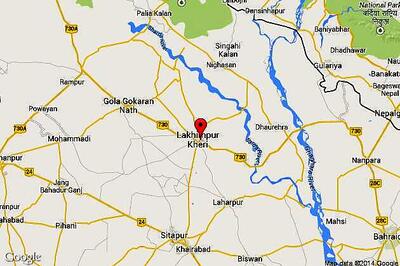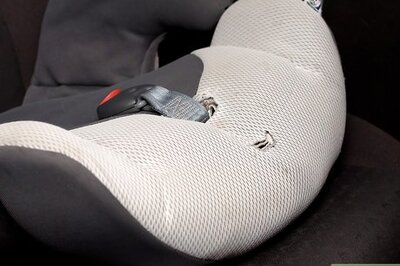
views
Washington: In a breakthrough, researchers have developed the world's fastest 2D camera that can capture events up to 100 billion frames per second.
The camera is faster than any current receive-only ultrafast imaging techniques, which are limited by on-chip storage and electronic readout speed to operations of about 10 million frames per second, researchers said.
Researchers at the Washington University used a technique called compressed ultrafast photography (CUP) to make movies of the images they took with single laser shots of four physical phenomena: laser pulse reflection, refraction, faster-than light propagation of what is called non-information, and photon racing in two media.
"For the first time, humans can see light pulses on the fly," Lihong Wang, Distinguished Professor of Biomedical Engineering, said.
"Because this technique advances the imaging frame rate by orders of magnitude, we now enter a new regime to open up new visions," said Wang.
This camera is a series of devices envisioned to work with high-powered microscopes and telescopes to capture dynamic natural and physical phenomena.
Once the raw data are acquired, the actual images are formed on a personal computer; the technology is known as computational imaging.
An immediate application of the camera is in biomedicine. It can be used to detect diseases or reflect cellular environmental conditions like pH or oxygen pressure. Wang envisions applications in astronomy, tracking and predicting the movements of thousands of potentially hazardous pieces of "space junk."
In forensics, CUP might be used in reproducing bullet pathways, which could once again open up the assassination conspiracy theories about former US president John F Kennedy and revive a more accurate analysis of the strange physics of the "magic bullet," researchers said.
CUP photographs an object with a speciality camera lens, which takes the photons from the object on a journey through a tube-like structure to a marvellous tiny apparatus called a digital micro-mirror device (DMD), smaller than a dime though hosting about 1 million micro-mirrors, each one just seven by seven microns squared.
There, micro-mirrors are used to encode the image, then reflect the photons to a beam splitter which shoots the photons to the widened slit of a streak camera. The photons are converted to electrons, which are then sheared with the use of two electrodes, converting time to space.
The electrodes apply a voltage that ramps from high to low, so the electrons will arrive at different times and land at different vertical positions.
An instrument called a charge-coupled device (CCD) stores all the raw data. All of this occurs at the breathtaking pace of 5 nanoseconds. One nanosecond is a billionth of a second. The research appears in the journal Nature.




















Comments
0 comment